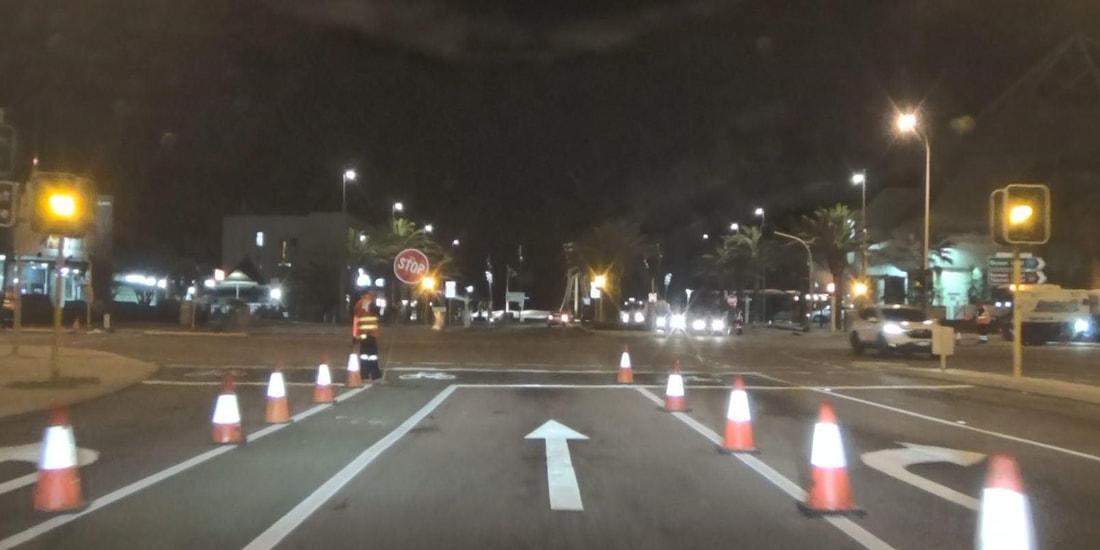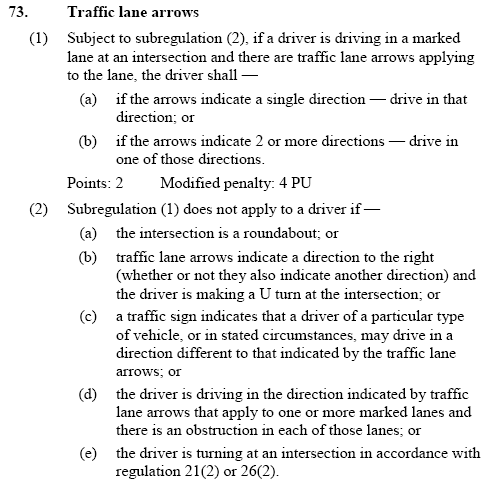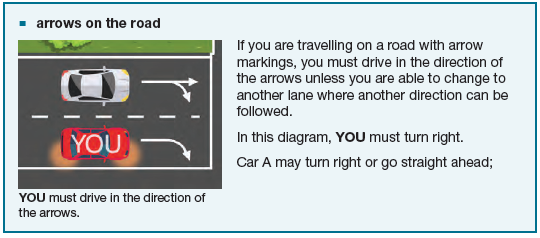Can you turn left or right when the Traffic Controller turns the bat from STOP to SLOW at this Road Works site in WA? (The signals are on flashing amber). Road Traffic Code 2000Regulation 73 (Traffic lane arrows) of version 05-10-02 of the Road Traffic Code 2000 states: Note that Subregulation 1 does not apply if “the driver is driving in the direction indicated by traffic lane arrows that apply to one or more marked lanes and there is an obstruction in each of these lanes.” The definition of an “obstruction” in the Road Traffic Code 2000 is “includes a traffic hazard but does not include a vehicle only because the vehicle is stopped in traffic or is travelling more slowly than other vehicles”. Despite not specifically mentioning road works in the “obstruction” definition, Regulations 22(3), 26(3) and 59(2b) identify “roadworks” as an example of an obstruction within a lane. Based on the above, it appears that the Road Traffic Code 2000 allows for right and left turns to be made legally from the straight-ahead lane on the basis that these turn lanes are provided on this approach but are “obstructed”. Drive Safe HandbookThe introduction to the Drive Safe Handbook indicates that: This handbook is a comprehensive guide to the road rules that apply in Western Australia. It is written in an easy to understand format and designed primarily to help new drivers prepare for a lifetime of safe driving. If you are a new driver, this book contains the information you will need to obtain your learner’s permit. The laws explained in this book are the major ones that are contained in the Road Traffic Code 2000 and Road Traffic (Vehicles) Regulations 2014. However, drivers should be familiar with all traffic laws and a copy of the relevant rules and regulations can be viewed on the internet at www.slp.wa.gov.au or purchased from the State Law Publisher. The following diagram within the Drive Safe Handbook indicates that drivers must drive in the direction of the arrows. Australian StandardsClause 5.5.2.3 (Intersection arrows) of AS 1742.2-2009 states “Intersection pavement arrows give a positive indication of the paths vehicles must follow at intersections or roundabouts. They are legally enforceable.” Clause 2.3.2 (Safety and convenience) of AS 1742.3-2009 states “When they are not applicable during the works period, regulatory signs shall be removed or covered. Regulatory pavement markings likewise shall be either obliterated or traffic control measures employed to direct traffic along paths which might otherwise infringe the regulatory requirements of the markings. Coroner's FindingsAt the Inquest into the death of Peter John Bonnell [2018] NTLC 002, the Coroner made a Finding (#23) that: “If existing markings are not appropriate or are potentially misleading, they should be removed and replaced by more suitable markings …” SummaryIn summary, it appears that it is legally permissible to turn right, left or travel straight ahead from a lane with pavement arrows indicating only other movements are allowed provided that the other lanes on the same approach indicate that these movements are permissible but are obstructed (closed) by roadworks. This assessment has indicated that it is unlikely that drivers will be aware of the ability to perform the movements indicated above as this is not clearly indicated in the Drive Safe Handbook. The Australian Standards indicate that pavement markings should be obliterated or managed within road work sites and a Coroner has indicated that if existing markings are not appropriate or are potentially misleading, they should be removed and replaced by more suitable markings. Roadworks are complex sites and signs should mean what they say to avoid any confusion or ambiguity. ActionThis assessment will be raised and discussed by the author with Main Roads WA through the Traffic Management for Works on Roads Users Group to identify and agree a consistent and clear method of addressing the issue of pavement markings within roadwork sites.
8 Comments
|
AuthorDavid Wilkins, Principal & Senior Traffic Engineer. Archives
August 2023
Categories
All
|
||||||



 RSS Feed
RSS Feed